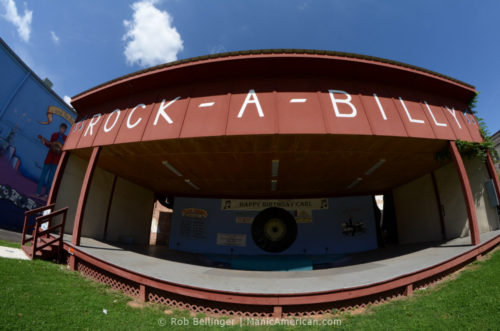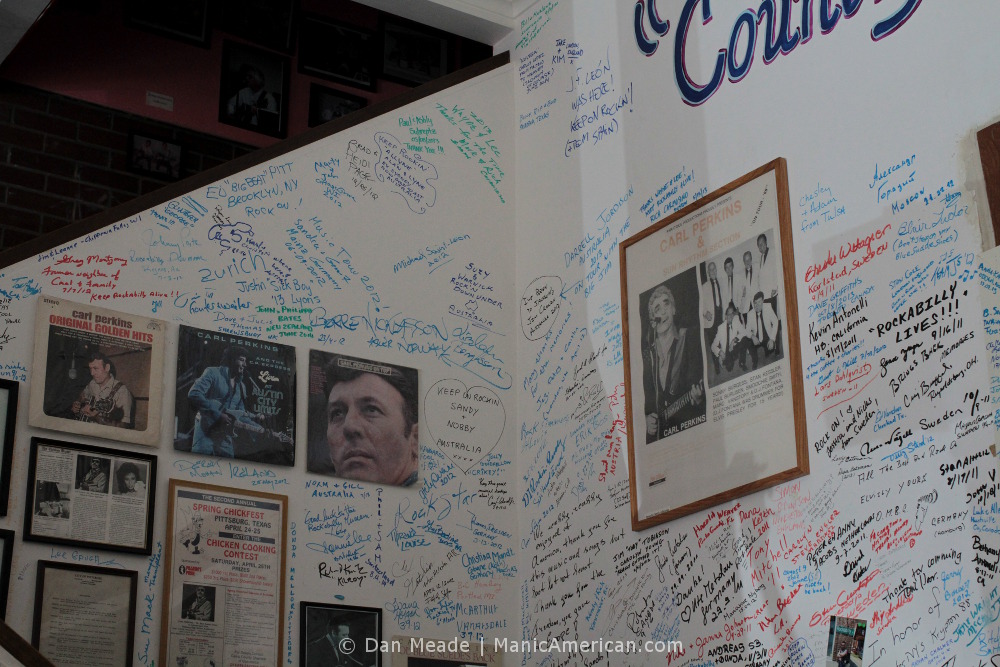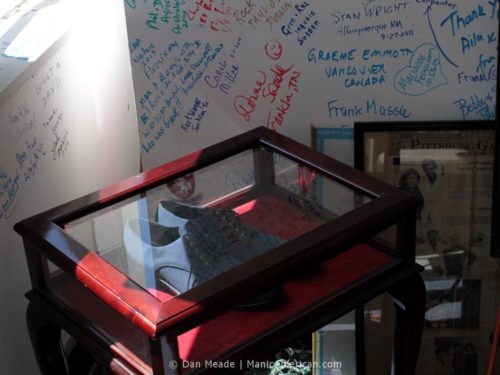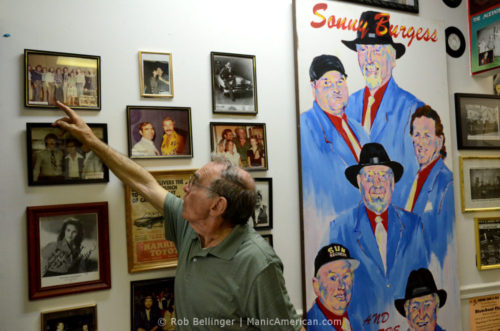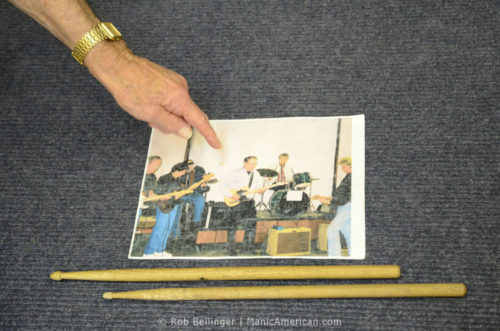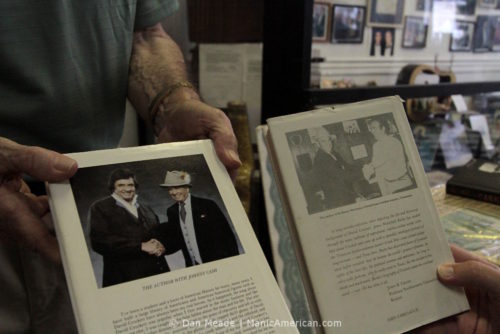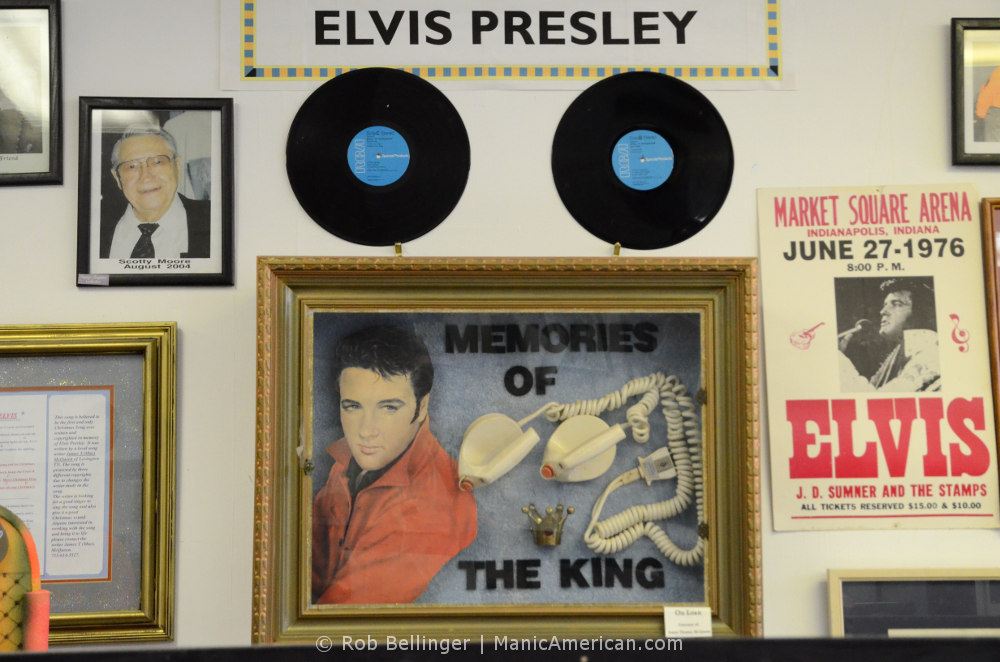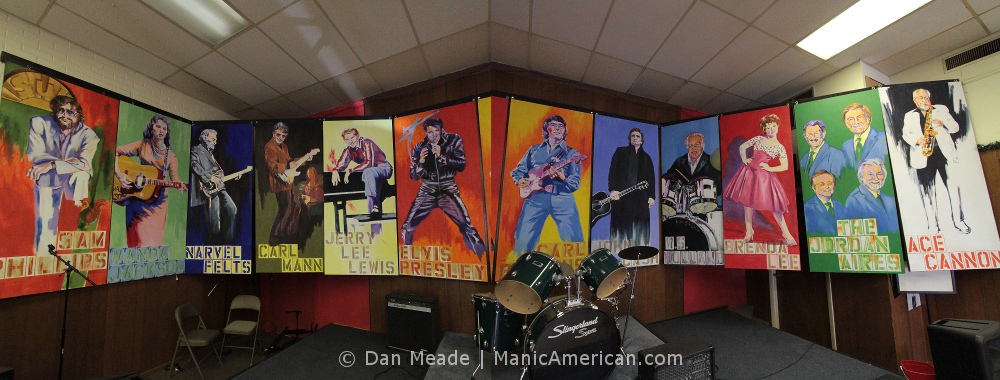![]() “And that’s my favorite picture of him, playing football on the street with the rest of us. Before he was famous, before anyone knew who he would become… we were just kids on the street together.” – Henry Harrison on Elvis Presley, July 3, 2014
“And that’s my favorite picture of him, playing football on the street with the rest of us. Before he was famous, before anyone knew who he would become… we were just kids on the street together.” – Henry Harrison on Elvis Presley, July 3, 2014
Spend enough time around Memphis and it’s very easy to begin chasing ghosts. The region is so rich with history, especially music history, that you don’t need to go far out of your way to run into them. They’re everywhere, and they’re preserved in many different ways. Friends, colleagues, museums, and the travel industry all take different approaches to the remembrance of things past.
Henry Harrison combines a few of those approaches in his International Rock-a-Billy Hall of Fame Museum in Jackson, Tennessee. Harrison was a childhood friend of Elvis, is a close friend of the Perkins family, and once boxed in a tournament with a young man named Cassius Clay. His life intersected with the lives of many cultural titans from the 1940s to 1970s, and he now creates active memories of those people for visitors to his museum.
If your visit to Harrison’s museum is anything like ours, he will invite you to write upon the walls, give you a drum lesson, and personally show you around the place. He will want you to know who Elvis, Carl, Johnny, Jerry, Roy, and the gang were as people, not as larger-than-life titans of music and history.
The tour he gave us was candid, funny, and humanizing. He spoke of the virtues as well as the vices of Rockabilly’s greats, but never in a gossipy or tell-all fashion. It was obvious how much Harrison loved those he talked about. With every joke he told and each call for us to pick up and interact with a piece of his collection, Harrison made memories for us that would help us remember these larger-than-life musicians as the people Harrison knew them to be.
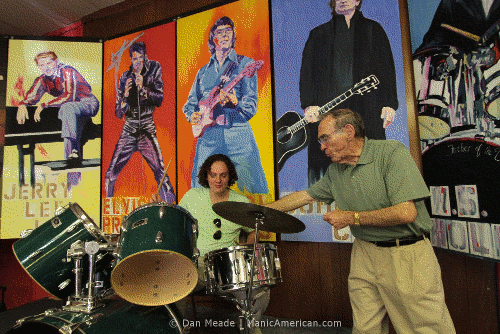
Toward the end of his tour Harrison led us to a series of cases dedicated to Elvis: photos, clothes, album covers, and other memorabilia from his life. Above them, a defibrillator in a case hung on the wall. Harrison turned somber for the first and only time during the tour as he began discussing the events of August 16, 1977.
In less than ten minutes Harrison gave us the kind of personal insight into Elvis’ final days that provides one of the clearest, and fullest, pictures of the man so many know only as The King.
Harrison’s remarks, transcribed from memory the day after our visit, are below. As so often happens, the conversation became deep too quickly for us to record it without interrupting it.
“Someone was trying to reach Elvis for two to three hours. They kept calling his room’s number and he didn’t pick up. Finally they called me and said I might want to check on him.
“Well, we got to his apartment and there was no sight of him. Finally we checked the bathroom and he was lying on the floor, half dressed.
“We couldn’t revive him. We called 911 and they sent the ambulance, but they couldn’t find a pulse. He was gone.
“And those are the paddles they used to try to revive him, just like everybody else.”
Harrison next pointed out a tell-all book written by one of Elvis’ bodyguards and began talking about the bodyguard, Elvis’ manager, and others in Presley’s inner circle:
“They fired [Elvis’ bodyguard] after [the book came out], and they should have, but everything he wrote was true. You can’t perform 250 shows a year, taking one pill to get up and another to get down after without it taking a toll. It happened to so many musicians and artists, the toll of performing.
“At the end they called him, and told him that they didn’t think Elvis had much time left. They had to prop him up to get him on stage, and he would collapse when it was over. But when he was on stage, he was electric!
“But [the bodyguard] never printed any of the good stuff! He only wrote about the bad times!
“Every day with Elvis was like a miracle! The time he saw a cook standing out in the rain smoking a cigarette on break, and just gave him two, three thousand dollars right out of his pockets. And he had never met him before!
“The time he bought a new car for the woman who served him at a restaurant. And he never even saw her before in his life!
“But when they called him, and said they didn’t know what more they could do… he was dead within 90 days.”
–Essay by Dan Meade
Photos by Dan Meade & Rob Bellinger
Publication date: 11/22/2017
Date of events: 7/03/2014
Related:
